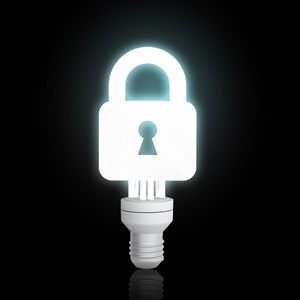- Building Innovations
- Residential Energy Innovations
- Cybersecurity
Amazon’s Key Service Echoes Growing Concerns Over Privacy and Security

Amazon’s latest service innovation has raised questions about how far the boundaries of technology can be pushed to make consumers' lives more convenient. The Amazon Key delivery service, along with the Amazon Cloud Cam and a compatible smart lock, allow users to grant access for in-home deliveries. The service solves issues around package theft and customer availability to receive a package. It works by sending the user a 4-hour window on the day of delivery and confirming the assigned courier is at the correct address at the intended time by scanning the package barcode. When the package is scanned, the user receives a notification of the imminent delivery, the Cloud Cam is activated, the door unlocks, and the user can watch the delivery in real-time or check back later to ensure the delivery went well. The service was made available in 37 cities for tens of millions of items in November 2017. This sounds simple and straightforward, but media and industry specialists are scrutinizing the limits this service approaches by letting strangers into people’s homes. And to be fair, there are already issues with it, including a flaw that allows couriers to disable the security camera and door lock (which Amazon has promised it will fix).
Can Security Solutions Tamper Concerns?
This new service is one among many offerings in the residential sector that emphasizes growing concerns over consumer privacy and security. From the common belief that our beloved social media sites are spying on users to publicized hacks of big name brands resulting in leaked personal data, consumers are increasingly wary as technology becomes a more intimate part of their lives. Stakeholders across the value chain recognize the need to implement more robust security solutions, and new regulations that aim to protect consumer data are emerging, such as the General Data Protection Regulation (GDPR). But for many, cybersecurity is only starting to become a priority, and companies are still figuring out how to deal with growing threats.
Threats of Scale
Data privacy and security become especially complex in the consumer electronics world because the home is a sanctuary and should be private and secure. At the same time, the hacking of a Wi-Fi router has much lower stakes than the hacking of a power plant and can be considered less of a priority for investment in security. Manufacturers promise data privacy and secure devices, but customer sentiment does not always resonate with these assurances. There is also the question of responsibility and whether the manufacturer, chip provider, wireless protocol alliance, or the consumer should be held responsible for security and data privacy. Consumers want to partake in social media, adopt smart home devices, and lead more convenient lives, but don’t want to feel like they are being watched, listened to, or followed, and they don’t always understand the risks associated with using technologies (such as the collection and sales of personal data).
Convenience vs. Safety
Privacy and security are increasingly affecting consumers at home. Residential customers are skeptical of technologies that have the potential to compromise privacy and security, which is affecting market growth. In order to progress the Internet of Things in the home, it is important for stakeholders in the residential space to be transparent with users about the measures they take to ensure the security of devices, software, services, and data privacy.